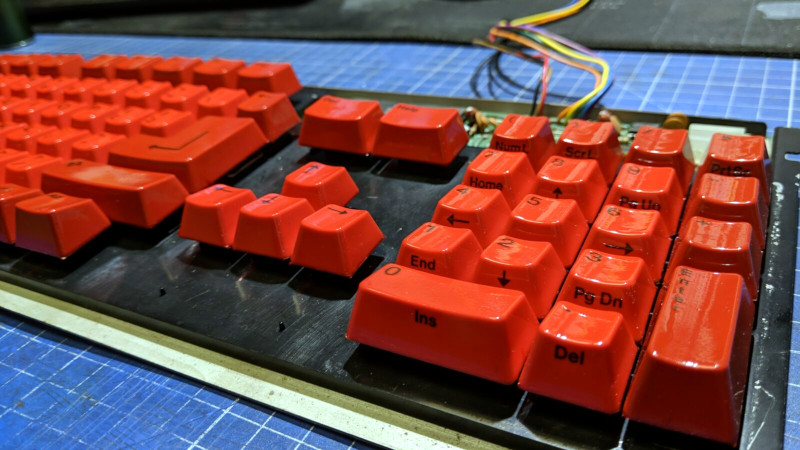Coloured keycaps are a common customisation when it comes to making your input device special. If you are working with modern tech it’s easy, there are plenty of vendors who can sell you keycaps for any purpose. With retro tech it’s never so simple, if a keycap hasn’t been made for decades you’re out of luck. This doesn’t faze [Drygol] though, who has solved the coloured retro keycap in a unique and non-destructive way. Wrap them in vinyl film using a vacuum former.
Vacuum formers are an often-underrated tool in the hardware arsenal, but as this project shows, they can produce startlingly good results. Original keycaps are placed on a 3D-printed scaffold before the vinyl is formed over them, then they are carefully cut out and a triangular edge on both sides is folded underneath, The result is an Amiga with a striking orange keyboard, and for us the best bit is that the original key is safely preserved under the vinyl.
[Drygol]’s exceptional work in the retrocomputing sphere has delighted us many times on these pages. There are too many examples to link here, but one we particularly liked was this nearly-all-new Amiga 2000.















Vacuum forming is indeed quite cool (pun intended :) ) I’ve seen some commercial kits for small scale vacuum forming and they are remarkably expensive for no apparent reason at all. You still have to add your own vacuum cleaner. DIY is a good option. It’s just a heating element a frame to hold the plastic sheet (heating it evenly is crucial) and a bed with the vacuum (low pressure, high volume, which makes a vacuum cleaner a good choice). There are plenty of tutorials on the web.
Vacuum forming also does not always have to be with heat. (Glass / Carbon / Kevlar) fiber cloth with epoxy is also regularly being covered in an air tight bag and sucked vacuum over a mold.
Nice! Another non-destructive option would be making a silicone mold from them and casting new resin keycaps.
Could also use this for clear protection coating on surfaces you don’t want to wear
I’m intrigued if he was able to get adequate results on the C64 keycaps which tend to have a spherical recess in the centre. The Amiga ones have a cylindrical one, where the foil could bend in a single dimension to cover, rather than having to sag evenly across two dimensions.